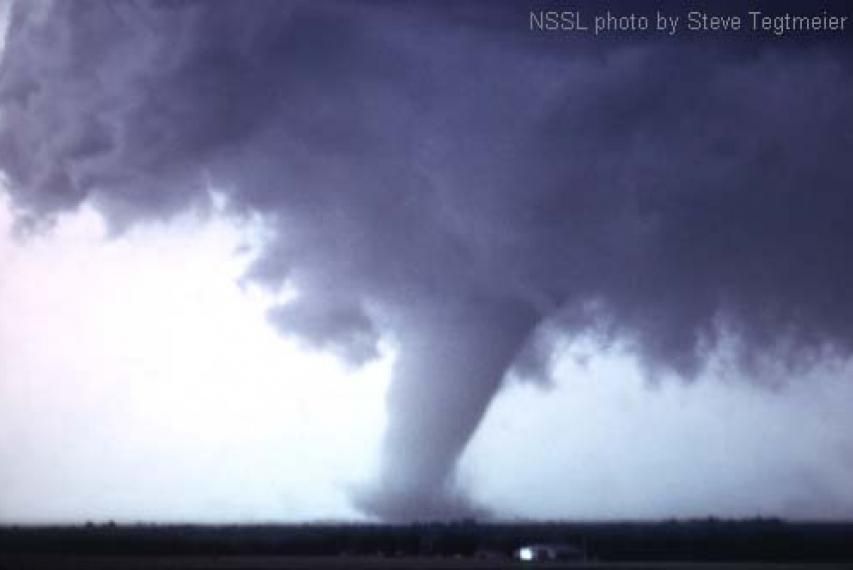
Known by a variety of names including tornadoes, twisters, typhoons, or cyclones, these weather events are devastating to property and life.  A powerful storm system in Virginia last year spawned at least eight tornadoes, killing four people in a single day. Because tornadoes can occur in any part of the state and at any time of year, it's important to plan and practice how to respond to a tornado warning. To encourage your awareness, the University will participate in Tornado Preparedness Day, March 21, by testing all components of its emergency notification system at 10:50 a.m. An all clear will be issued at 11:10 a.m.
In the event of a real tornado warning, seek shelter immediately. During the drill on Tuesday, take time to look around and think through where you would shelter in a real tornado. Practice moving to a safe location if your schedule allows, but do not disrupt your schedule if you are in class, supporting clinical operations or conducting critical research.
How to Prepare for a Tornado
Familiarize yourself with terms that define a tornado hazard
- Tornado Watch: Conditions are favorable for a tornado to form. Stay tuned to news reports.
- Tornado Warning: A tornado has been sighted, is approaching, and you should shelter in place immediately.
Determine shelter areas in your office building, classroom, dorm, or home in advance:
- If a tornado warning is issued, take cover indoors IMMEDIATELY.
- Shelter in a sturdy building.  (A vehicle, trailer, or mobile home does not provide good protection.)
- The safest place is in a basement.
- If there is no basement, a center hallway, bathroom or closet on the lowest floor is optimal.
- Avoid areas with windows.
- In a high-rise building like University Hospital or Bice House, you may not have enough time to go to the lowest floor. Pick a place in a hallway in the center of the building.
- Inform visitors of a tornado and move them to safe areas.
- If you are outside, try to get into a sturdy building.
- If there is no time to get indoors, lie down flat in a ditch or depression; facing down, cover your head with your hands and arms.
- Develop a plan at home for you and your family and practice the plan often.
Studies show that making a plan and practicing it before an emergency can increase your chances of survival.
These basic instructions are on UVA’s Emergency Procedures Poster.
